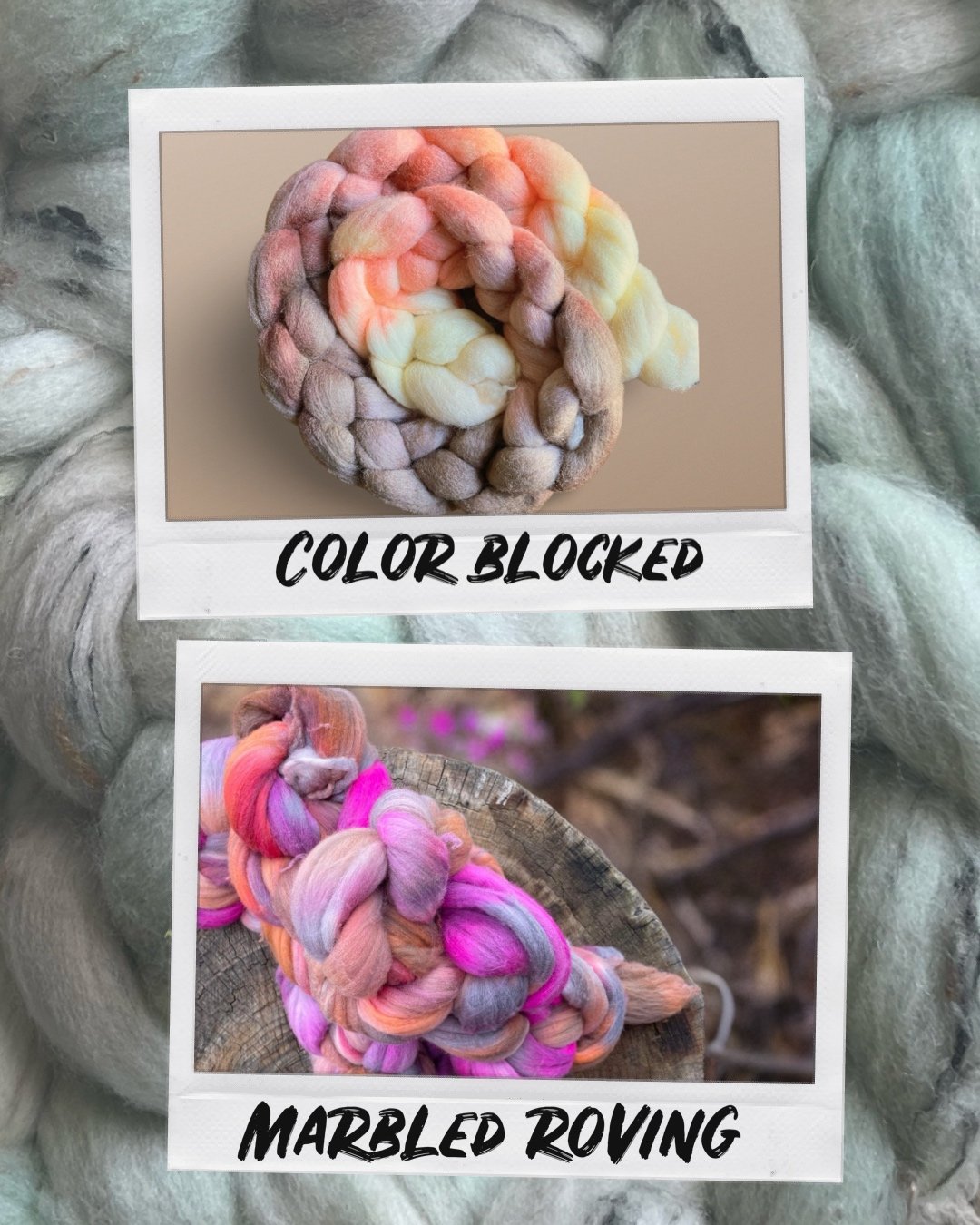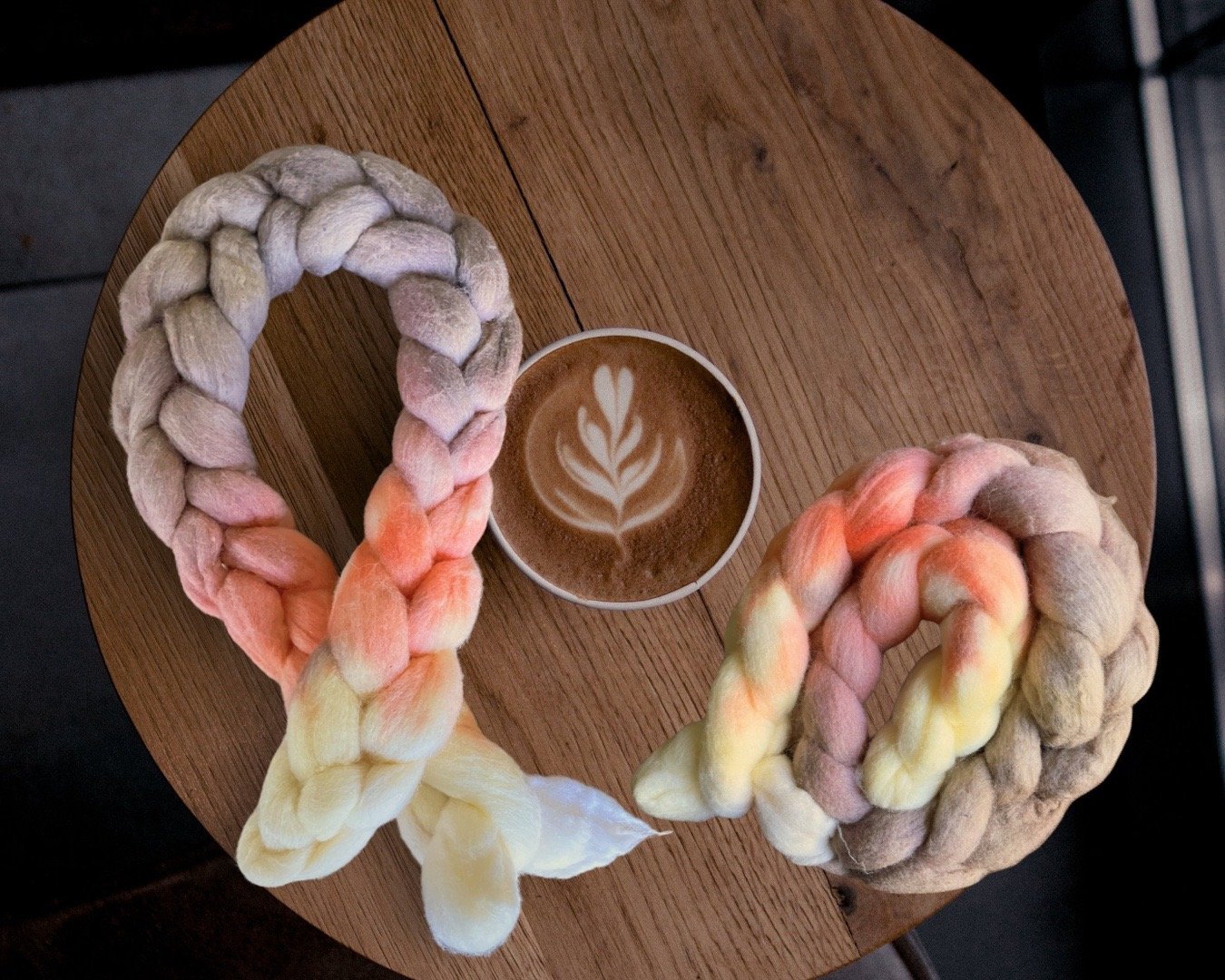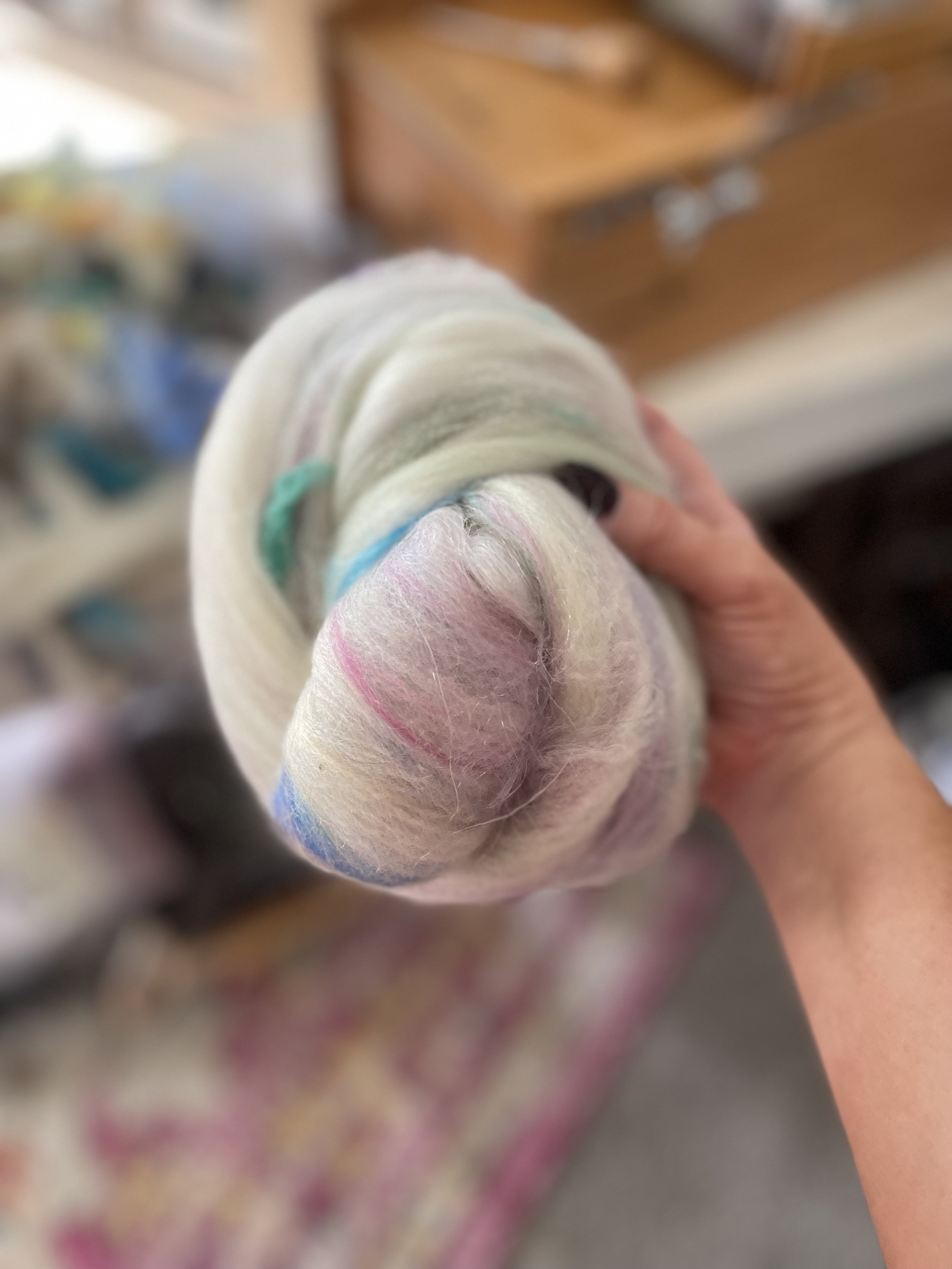Exploring Color Blocked Spinning Fiber Roving vs Marbled Spinning Fiber Roving: A Yarn Spinning Crafts Blog
How to spin dyed roving wool
In today's article, we are going to explore the differences between color blocked spinning fiber roving and marbled spinning fiber roving. Whether you are an experienced spinner or just starting out, understanding the characteristics and potential applications of these two types of roving can help you create unique and beautiful handspun yarns. So, let's get started!
Color Blocked Spinning Fiber Roving:
Color blocked spinning fiber roving is precisely what it sounds like - roving that features distinct blocks of different colors. This type of roving is often dyed in a way that creates bold, eye-catching contrasts. The color blocks can be horizontal, diagonal, or arranged in various patterns. The distribution of colors can be evenly spaced or deliberately asymmetrical, depending on the artistic vision of the fiber dyer.
Advantages of Color Blocked Spinning Fiber Roving:
Versatility: Color blocked roving allows spinners to create yarns with striking color transitions and bold visual effects. These yarns can be used to make accessories, garments, or even art pieces.
Design Control: Spinners have the freedom to control the placement and blending of colors while drafting the fiber, resulting in customized yarns that reflect their artistic sensibilities.
Highlighting Fiber Characteristics: Color blocked roving can emphasize the unique qualities of different fibers.
Marbled Spinning Fiber Roving:
Marbled spinning fiber roving offers a completely different aesthetic compared to color blocked roving. As the name suggests, it resembles the effect of marbling seen in various art forms. The colors in marbled roving are blended together more smoothly, creating a subtle and harmonious appearance. This type of roving often features gentle transitions and gradations from one color to another.
Advantages of Marbled Spinning Fiber Roving:
Soft and Subtle Effects: Marbled roving provides a softer and more blended color effect in handspun yarns. This can be appealing for projects where a gentle or understated color scheme is desired.
Smooth Transitioning: The gradual blending of colors in marbled roving allows for smooth transitions as the fiber is drafted and spun, resulting in yarns that create beautiful visual gradients when knitted or crocheted.
Unique Textures: The subtle variations created by marbled roving can add depth and texture to your finished yarn, adding interest and complexity to your projects.
Color blocked spinning fiber roving and marbled spinning fiber roving offer unique creative opportunities for yarn spinners. Whether you prefer the bold contrasts of color blocked roving or the gentle transitions of marbled roving, both types allow for the creation of stunning handspun yarns. So, it's time to experiment with these diverse roving options and unleash your creativity in your next spinning project!
I hope you enjoyed this exploration of color blocked and marbled spinning fiber roving. Stay tuned for more exciting topics and tutorials in our yarn spinning crafts blog. Happy spinning!
The Yarn Skein Collective An exclusive, ever-growing vault of fiber arts guides, tips, and resources—curated from years of limited-time offers, workshops, and course bonuses. Now permanently housed on-site, free to access. Sign up to explore and get notified when fresh content drops. It’s for fiber besties who want to stay inspired and in the loop.
Step-by-Step Dream Yarn ( 6 module Course) Your monthly guide to spinning success—from fiber prep to finished skein. Whether you're brand new or leveling up, this course breaks it down into bite-sized lessons, pro tips, and video walkthroughs that grow with you. Learn the exact steps to create dreamy, balanced, custom yarns—with confidence and style.





